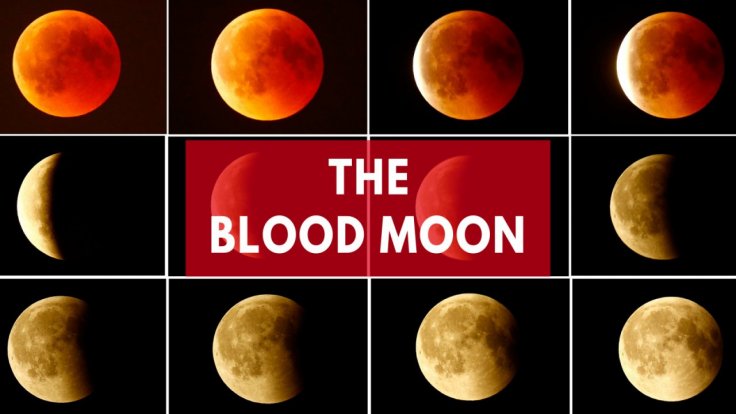A full super blood moon is all set to appear in the night sky on Wednesday, May 26. The beautiful cosmic phenomenon will go with a total lunar eclipse visible across the western US during early morning.
NASA has said that the eclipse will be visible across parts of the Americas, Australia, New Zealand and Eastern Asia. The upcoming lunar eclipse coincides with the moon's closest approach to Earth, thus making it a supermoon eclipse.

Why is It Called Blood Moon ?
A lunar eclipse occurs when the Earth is between the full moon and the sun. According to Space.com the moon turns red because of the Earth's atmosphere. "The atmosphere tends to scatter blue light. As the Earth passes between the sun and moon, the light from the sun passes through the Earth's atmosphere and the blue light is scattered. In addition, the light is refracted, or bent, and focused on the moon. In that sense, the Earth's air is like a giant lens. The light hits the moon and is reflected back to us — and we see the moon turn blood-red," stated the outlet.
According to NASA's Eclipse Page the eclipse starts at 4:47:39 a.m. EDT (08:47:39 GMT), That's when the moon touches the penumbra. The partial phase of the eclipse starts about 57 minutes later, at 5:44 a.m. EDT (09:44:57 GMT). The moon enters the total phase of the eclipse at 7:11:25 EDT (11:11:25 GMT) and completes exiting the umbra at 10:52:22 EDT (12:52:22 GMT).
Here is How You Can Watch It
The upcoming lunar eclipse will appear slightly larger than normal as the moon will reach perigee, the closest point in its orbit to Earth, on May 25 at 9:21 p.m. EDT (0121 May 26 GMT).
Unlike solar eclipses which require special equipment to watch, lunar eclipse can be enjoyed with naked eyes without any special glasses.
CNET reported that the Virtual Telescope Project will provide a live feed starting at 3 a.m. PT on May 26. Also, Timeanddate.com will be hosting its own global streaming event in partnership with astronomers in Australia, Hawaii, California and Arizona. The show is slated to staff at 2:30 a.m. PT. This Super Blood Moon will be the last supermoon of 2021.









